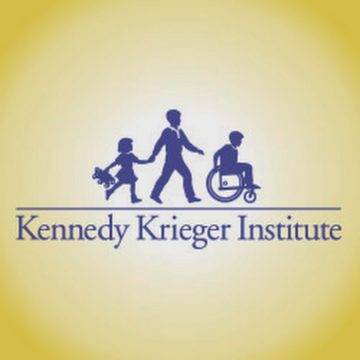 A decade ago, Sarah S. Mire helped assess autism symptoms in children who came to Baylor College of Medicine in Texas for a research project. She got to know their families and appreciate the time they devoted to the Simons Simplex Collection (SSC), an autism study that recruited families at university centers throughout the United States and Canada.
A decade ago, Sarah S. Mire helped assess autism symptoms in children who came to Baylor College of Medicine in Texas for a research project. She got to know their families and appreciate the time they devoted to the Simons Simplex Collection (SSC), an autism study that recruited families at university centers throughout the United States and Canada.
Like other families affected by autism,1-3 many of the parents she met experienced higher than average levels of stress. Some, she noticed, seemed to be coping well with every curveball, managing their child’s autism symptoms, learning needs, speech or behavioral therapies, and medical appointments. They had a kind of resilience that seemed “unique to families on the spectrum,” she recalled recently.
“Parents are such critical figures in the lives of children,” she said. She wanted to know more about parents’ stress levels and their perceptions of autism, and how these affected the treatment and services their children received. Previous studies have found that parents’ perceptions about autism may influence the types of treatments they seek for it.4,5 And stress can affect parents’ ability to follow their children’s behavior plans or implement autism interventions at home, according to other research.6-8
“I’m a researcher, and I’m also a practicing psychologist, so the human component of autism is incredibly interesting to me,” Dr. Mire explained in an interview. With more research, she said, schools, doctors, therapists and service providers would have the data to help them serve these families better. “If research can identify factors that elevate the risk for stress, and also factors that lower the risk for stress, that would give us a mechanism for how to serve these families more effectively.”
Dr. Mire’s interest in not just an academic exercise. As assistant professor in the Psychological, Health and Learning Sciences Department at University of Houston, she trains people working on an advanced degree in school psychology. Her students likely will become key players in the lives of schoolchildren. School psychologists often play a role in obtaining school and community services for children and youth with autism spectrum disorder (ASD).
Returning to SSC Families
 For their study of stress, Dr. Mire and her research team looked to the SSC. After the SSC project ended around 2011, more than half of its 2,600 families joined the Interactive Autism Network (IAN). As members of the SSC@IAN, they can continue to be contacted by autism researchers interested in SSC participants.
For their study of stress, Dr. Mire and her research team looked to the SSC. After the SSC project ended around 2011, more than half of its 2,600 families joined the Interactive Autism Network (IAN). As members of the SSC@IAN, they can continue to be contacted by autism researchers interested in SSC participants.
More than 350 of those SSC@IAN parents, mostly mothers, took part in the stress research, which was published in 2018.9 They completed a questionnaire typically used for parents of children with chronic illnesses, such as diabetes or asthma. Although the questionnaire was not designed specifically for autism, Dr. Mire wanted to see where the SSC@IAN parents were similar – and different – from parents of children with other health conditions.
One area of divergence involved the feelings of control parents felt treatment had over their child’s autism compared to the control parents felt they had over ASD symptoms. Generally, parents whose children have diagnoses such as asthma or diabetes distinguish between how much treatment controls their child’s symptoms and how much the parents themselves can affect symptoms. “For example, in diabetes, parents may say, ‘These are the things the treatment can do, and these are the things I, the parent, can do.’ There is a separation between the parent and the treatment,” Dr. Mire said.
Not so with the SSC@IAN parents in her study. She found no difference between parents’ perspectives about how much treatment could change the course of autism versus how much the parents could change symptoms. “What this reflected is enormous investment parents have in autism treatment, and how much they view their child’s outcomes as being reliant on them, as parents,” she said.
Although the study does not delve into the reasons, autism treatment is different from, say, asthma treatment, in that there is no one, standard course of treatment that is generally available, she said. Therapies based on Applied Behavioral Analysis (ABA) theory have been proven to work in autism, but many school systems do not offer ABA therapies and some insurance plans do not pay for it. Similarly, some health insurance plans may not cover the speech or occupational therapies commonly used in autism. Schools in different communities may vary vastly in the amounts or types of speech, occupational or behavioral therapies, and special educational services, they provide to children with autism.
A “Complicated Landscape” for Parents Seeking Autism Help
I think it’s important for researchers and practitioners to recognize the huge demands on parents and understand their thought processes, and help with – or at least not exacerbate – the stresses that parents experience.
To complicate matters, some children have co-occurring medical conditions that seem to be more common in autism, such as poor sleep, gastrointestinal disorders, or behavioral problems.10-15 Parents may have to chart their own course through both school and health care systems to find the therapies or treatments they want for their child. “It’s a really complicated landscape for parents, which is why we don’t have a nice differentiation between, ‘This is what treatment does,’ and ‘This is what I do,'” Dr. Mire said.
Ultimately, she said, it does not matter whether parents draw a bright line between what they do and what treatment can do. “I think it’s important for researchers and practitioners to recognize the huge demands on parents and understand their thought processes, and help with – or at least not exacerbate – the stresses that parents experience,” she said.
Her research team is currently analyzing the same SSC@IAN data for a second research article, this one focusing on parents’ stress levels, supports, and ways of coping. The researchers are looking at factors that might make a family more resilient to stress. That research has not been published yet.
An autism diagnosis can create a “ripple effect across families and communities,” Dr. Mire said. A better understanding of those effects can help school, health care, and community providers work better with the families and children they serve, she said.

Reproduced with permission of KKI, Baltimore, MD.
- See more information on Dr. Sarah Mire and the University of Houston School Psychology Autism Research Collaboration
- For an in-depth discussion of parenting stress, see IAN’s article on Stress and the Autism Parent
- IAN’s article, Families Face Autism Stigma, Isolation, discusses the stigma reported by SSC families
- IAN looks at autism stigma in different countries in The Stigma of Autism: When All Eyes are Upon You
- Take our nonscientific poll: Parents: How much time do you spend weekly on autism therapies (speech, play, occupational, behavioral)?
Photo of Dr. Mire courtesy of University of Houston. Other photos: iStock.
- Hayes, S. A., & Watson, S. L. (2013). The impact of parenting stress: A meta-analysis of studies comparing the experience of parenting stress in parents of children with and without autism spectrum disorder. Journal of Autism and Developmental Disorders, 43(3), 629-642. doi:10.1007/s10803-012-1604-y [doi] Abstract.
- Bonis, S. (2016). Stress and parents of children with autism: A review of literature. Issues in Mental Health Nursing, 37(3), 153-163. doi:10.3109/01612840.2015.1116030. Abstract
- Miodrag, N., & Hodapp, R. M. (2010). Chronic stress and health among parents of children with intellectual and developmental disabilities. Current Opinion in Psychiatry, 23(5), 407-411. doi:10.1097/YCO.0b013e32833a8796 [doi] Abstract
- Al Anbar, N. N., Dardennes, R. M., Prado-Netto, A., Kaye, K., & Contejean, Y. (2010). Treatment choices in autism spectrum disorder: The role of parental illness perceptions. Research in Developmental Disabilities, 31(3), 817-828. doi:10.1016/j.ridd.2010.02.007 [doi] Abstract.
- Mire, S. S., Gealy, W., Kubiszyn, T., Burridge, A. B., & Goin-Kochel, R. P. (2017). Parent perceptions about autism spectrum disorder influence treatment choices. Focus on Autism and Other Developmental Disabilities, 32(4), 305-318. doi: Abstract
- Kazdin, A. E. (1995). Child, parent and family dysfunction as predictors of outcome in cognitive-behavioral treatment of antisocial children. Behaviour Research and Therapy, 33(3), 271-281. doi:0005-7967(94)00053-M [pii]
- Osborne, L. A., McHugh, L., Saunders, J., & Reed, P. (2008). Parenting stress reduces the effectiveness of early teaching interventions for autistic spectrum disorders. Journal of Autism and Developmental Disorders, 38(6), 1092-1103. doi:10.1007/s10803-007-0497-7 [doi]
- Robbins, F. R., Dunlap, G., & Plienis, A. J. (1991). Family characteristics, family training, and the progress of young children with autism. Journal of Early Intervention, 15(2), 173-184. doi:10.1177/105381519101500206
- Mire, S. S., Tolar, T. D., Brewton, C. M., Raff, N. S., & McKee, S. L. (2018). Validating the revised illness perception questionnaire as a measure of parent perceptions of autism spectrum disorder. Journal of Autism and Developmental Disorders, 48(5), 1761-1779. doi:10.1007/s10803-017-3442-4 [doi] Abstract.
- Malow, B. A., Byars, K., Johnson, K., Weiss, S., Bernal, P., Goldman, S.E., Panzer, R., . . . Glaze, D. G. (2012). A practice pathway for the identification, evaluation, and management of insomnia in children and adolescents with autism spectrum disorders. Pediatrics, 130(2), 106-124.
- Croen, L. A., Zerbo, O., Qian, Y., Massolo, M. L., Rich, S., Sidney, S., & Kripke, C. (2015). The health status of adults on the autism spectrum. Autism : The International Journal of Research and Practice, 19(7), 814-823. doi:10.1177/1362361315577517 [doi]
- Krakowiak, P., Goodlin-Jones, B., Hertz-Picciotto, I., Croen, L. A., & Hansen, R. L. (2008). Sleep problems in children with autism spectrum disorders, developmental delays, and typical development: A population-based study. Journal of Sleep Research, 17(2), 197-206. doi:10.1111/j.1365-2869.2008.00650.x [doi]
- Aldinger, K. A., Lane, C. J., Veenstra-VanderWeele, J., & Levitt, P. (2015). Patterns of risk for multiple co-occurring medical conditions replicate across distinct cohorts of children with autism spectrum disorder. Autism Research : Official Journal of the International Society for Autism Research, 8(6), 771-781. doi:10.1002/aur.1492 [doi]
- Minshawi, N. F., Hurwitz, S., Fodstad, J. C., Biebl, S., Morriss, D. H., & McDougle, C. J. (2014). The association between self-injurious behaviors and autism spectrum disorders. Psychology Research and Behavior Management, 7, 125-136. doi:10.2147/PRBM.S44635 [doi]
- Kanne, S. M., & Mazurek, M. O. (2011). Aggression in children and adolescents with ASD: Prevalence and risk factors. Journal of Autism and Developmental Disorders, 41(7), 926-937. doi:10.1007/s10803-010-1118-4 [doi]

